Gray Fox is complete. Porcupine is the next critter in line. We’ve seen evidence of a porcupine in our backyard, so he belongs in this drawloom parade.
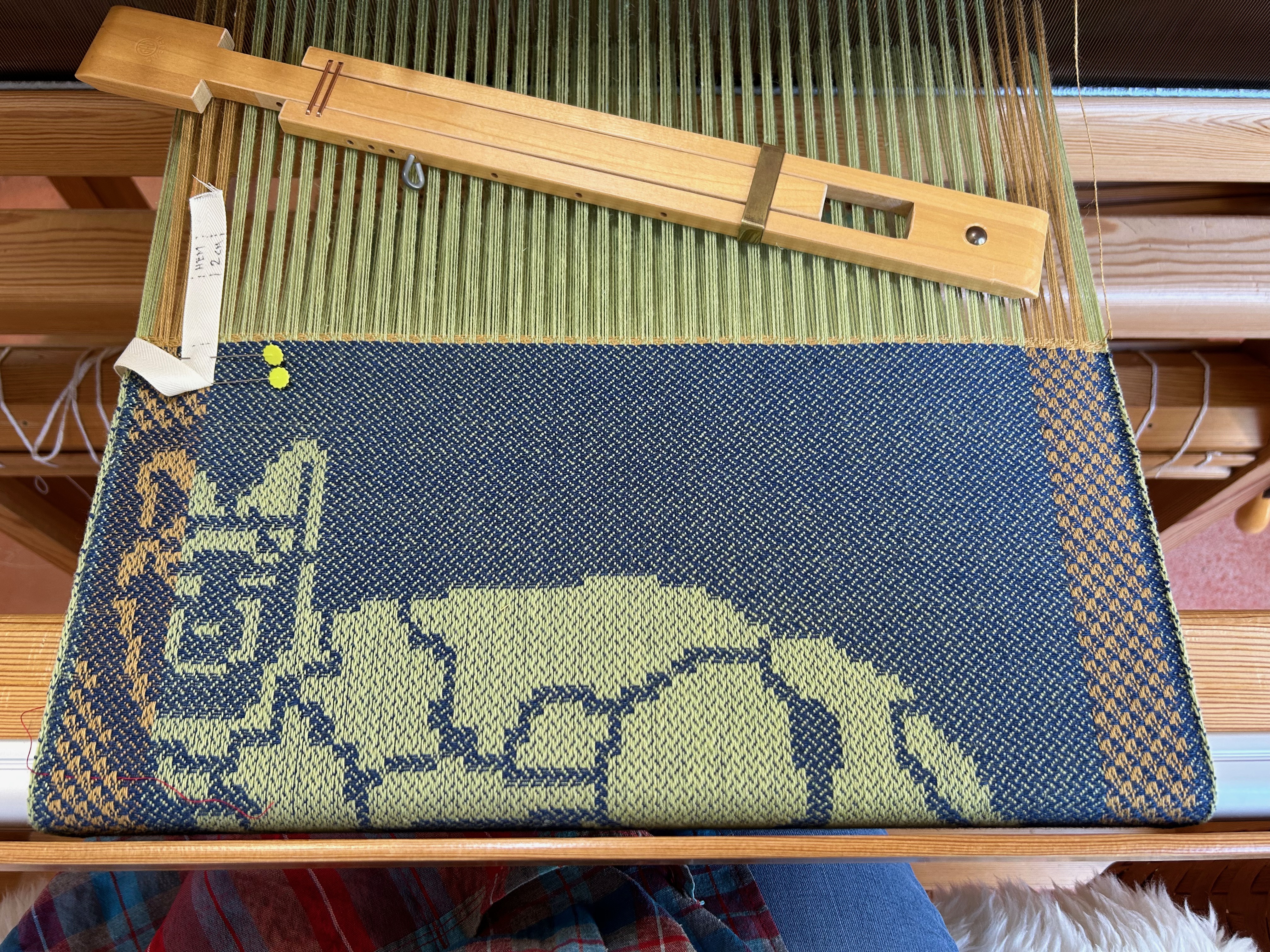
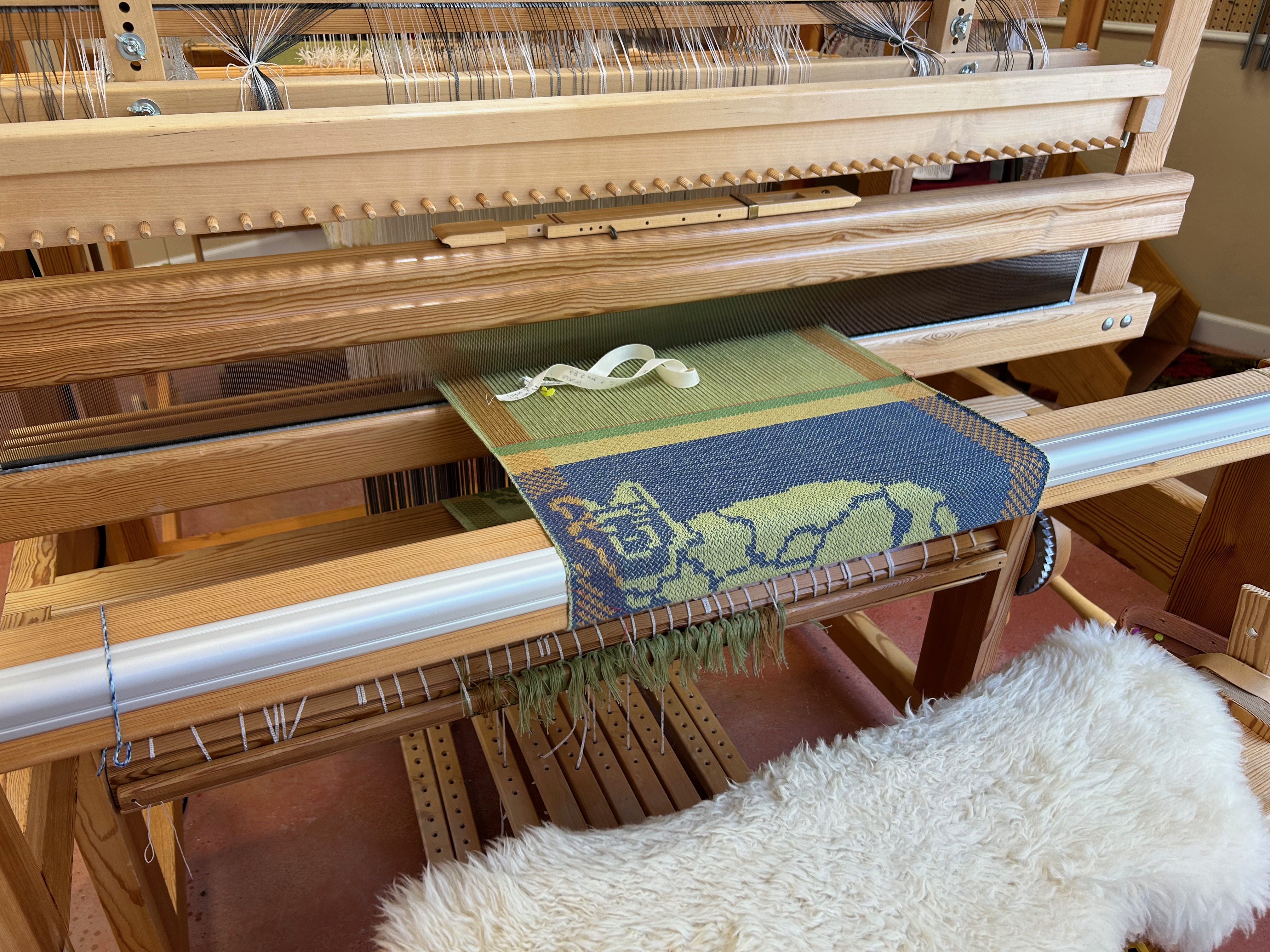
May you find interesting critters near you.
Happy Weaving,
Karen
a handweaver's journey
Gray Fox is complete. Porcupine is the next critter in line. We’ve seen evidence of a porcupine in our backyard, so he belongs in this drawloom parade.


May you find interesting critters near you.
Happy Weaving,
Karen
Gray Fox is showing his stride. That bushy tail is impressive. On the drawloom I get to determine exactly where that tail will swish. Where the tail crosses into the side border, I switch from pulling one pattern shaft draw handle to pulling individual single unit draw cords. That’s where the complexity of the combination drawloom really shines. It gives me extraordinary flexibility for weaving the designs I have in mind.
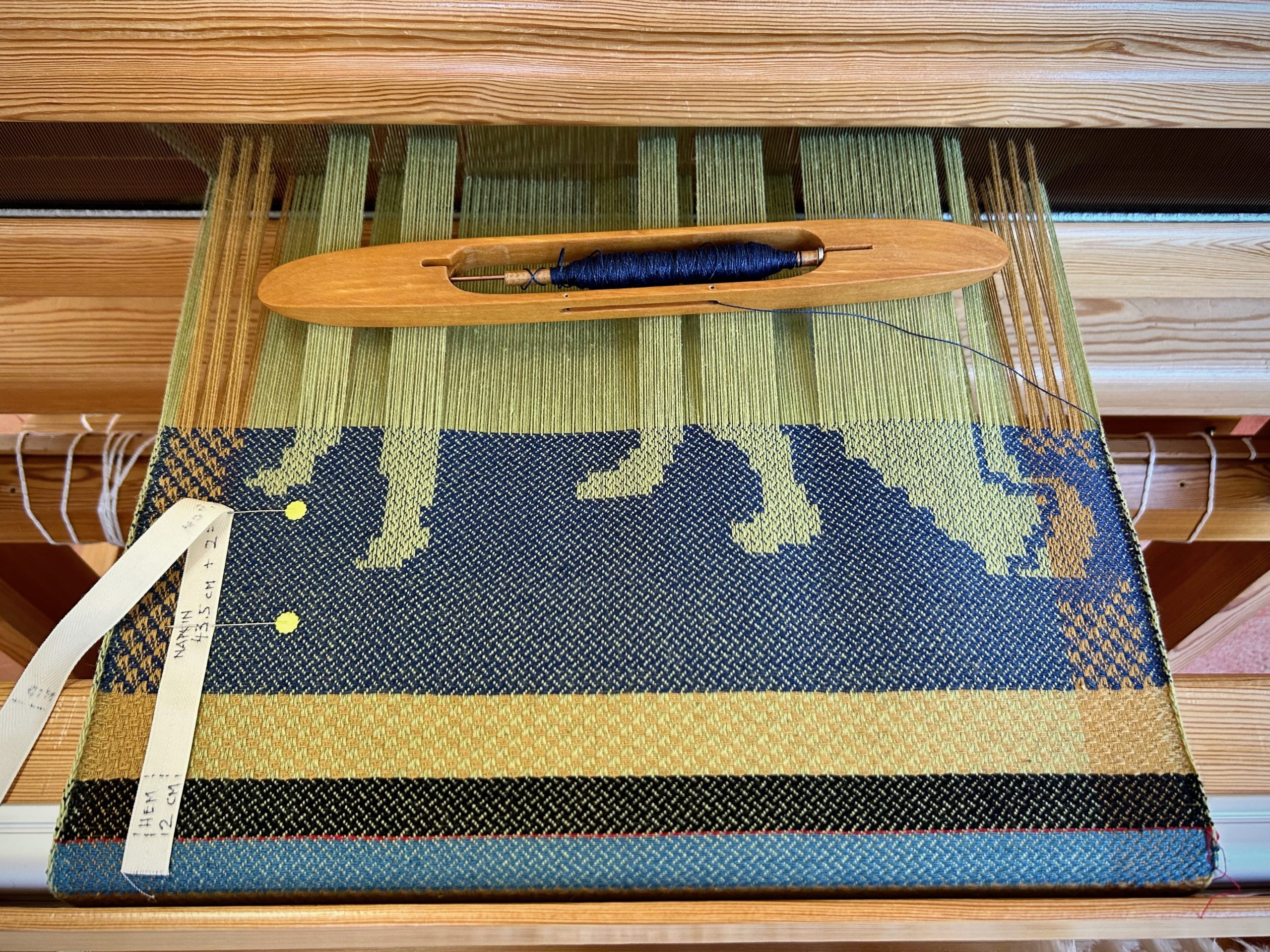
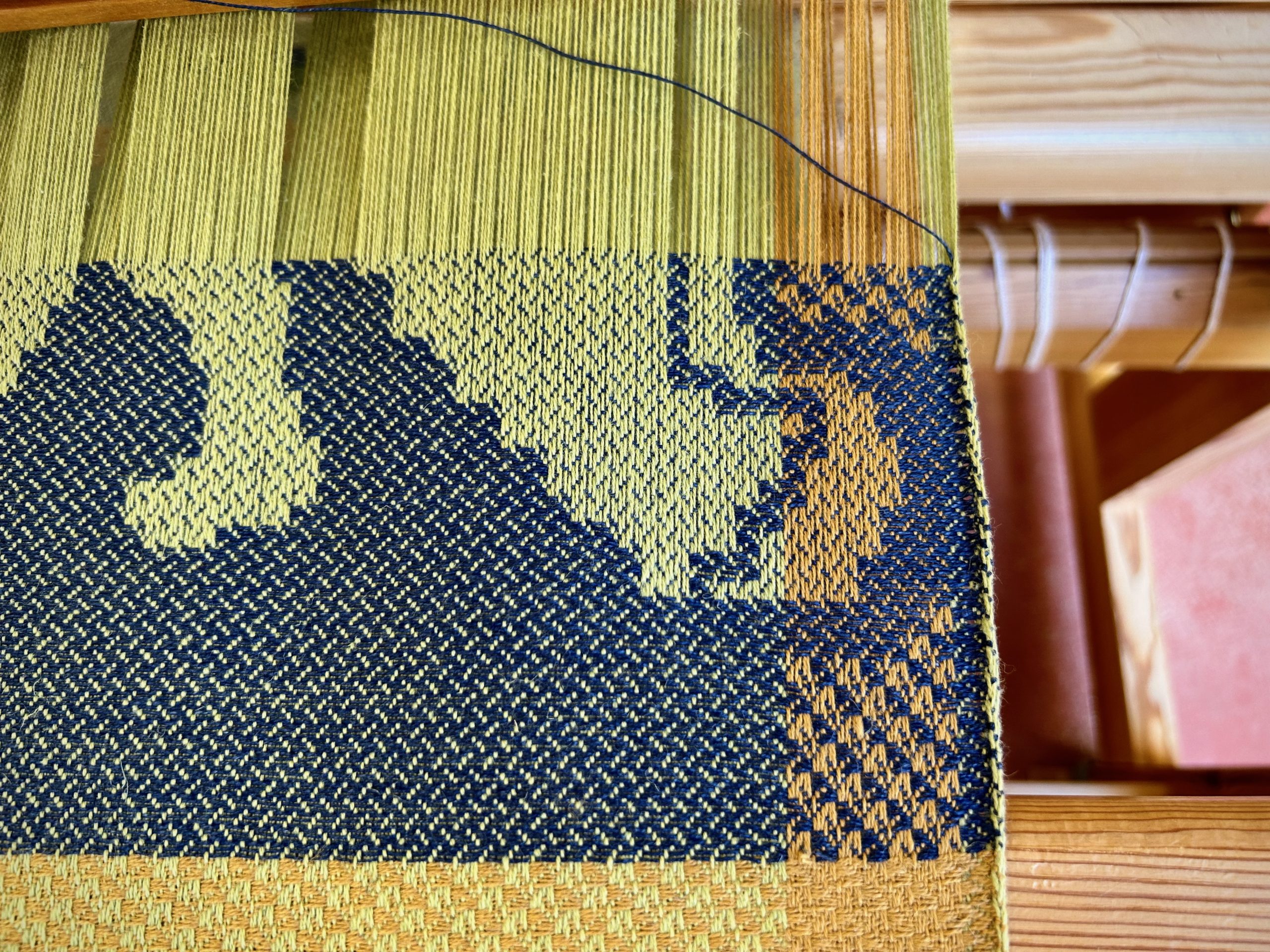
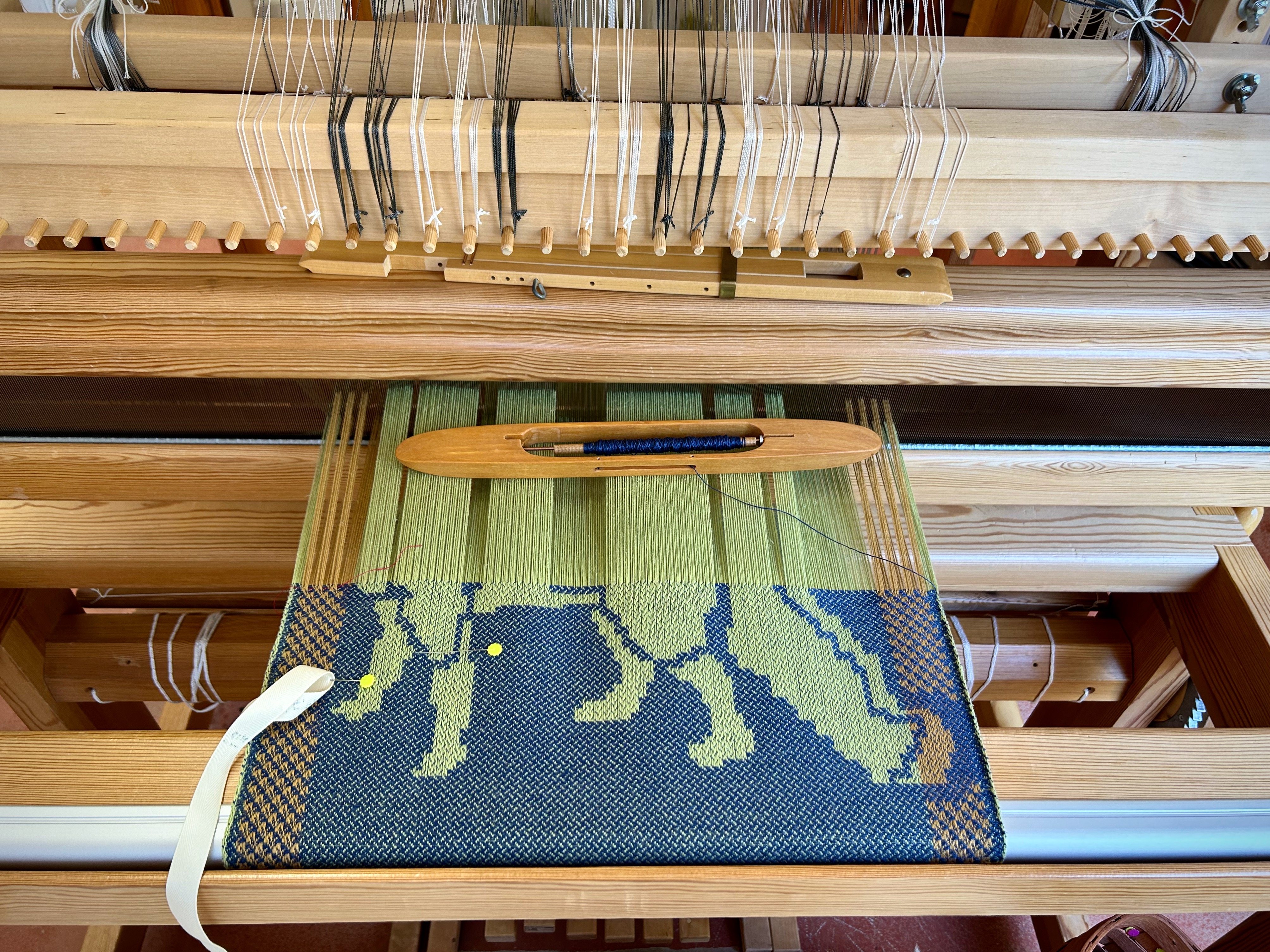
In some ways I think of the drawloom as a tool of simplicity. Despite the countless cords and shafts, every piece has a simple purpose. Each single unit draw cord, for example, simply lifts a single unit of 6 threads. That’s all it does. Complexity is a matter of perspective.
May you enjoy the simple things you find in complexity.
All the best,
Karen
Spaced rep rag rugs are off the loom! Follow the pictures to see how they came out, and the surprising thing I am doing with one of them. (It was Steve’s idea.)
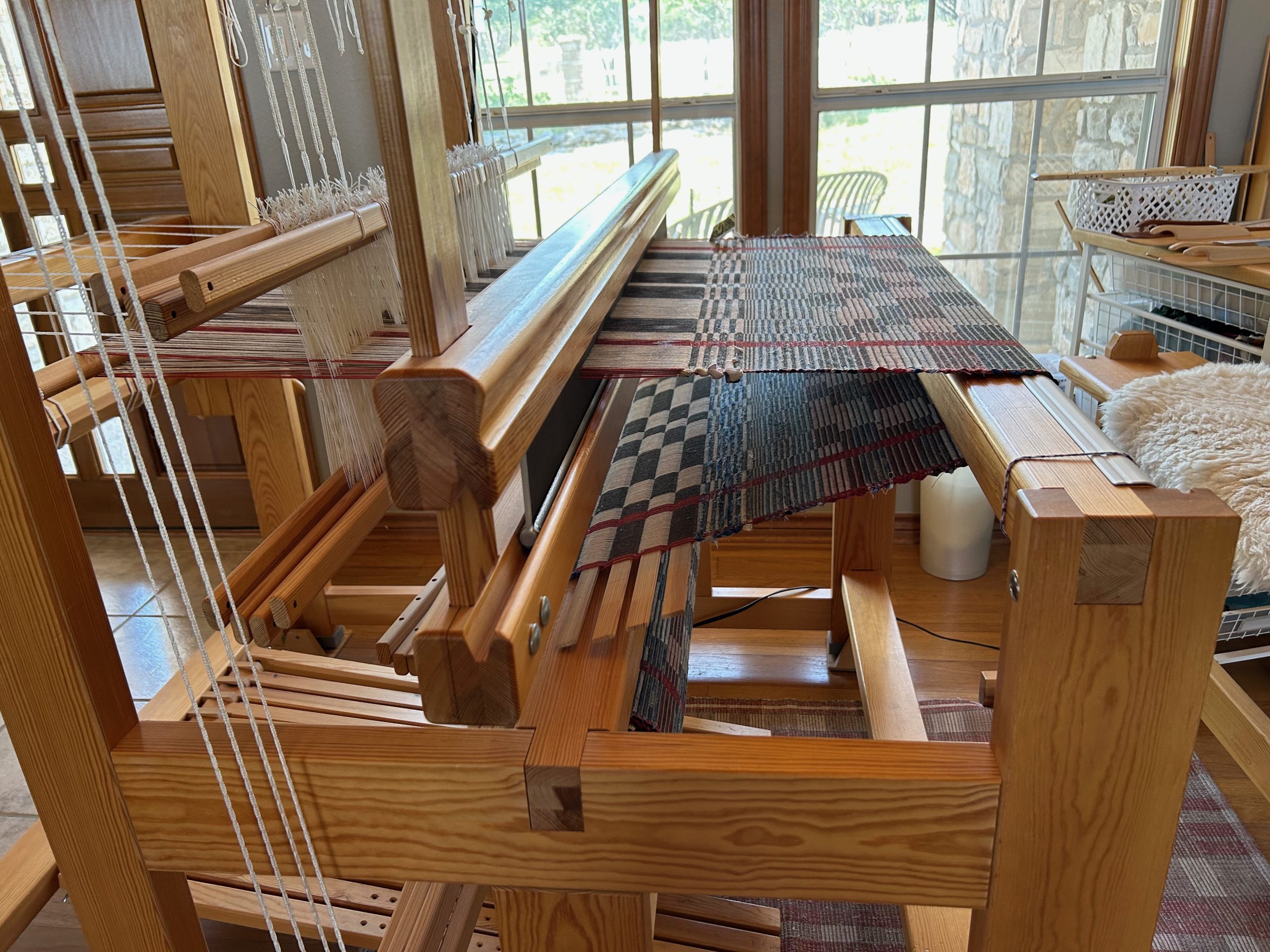
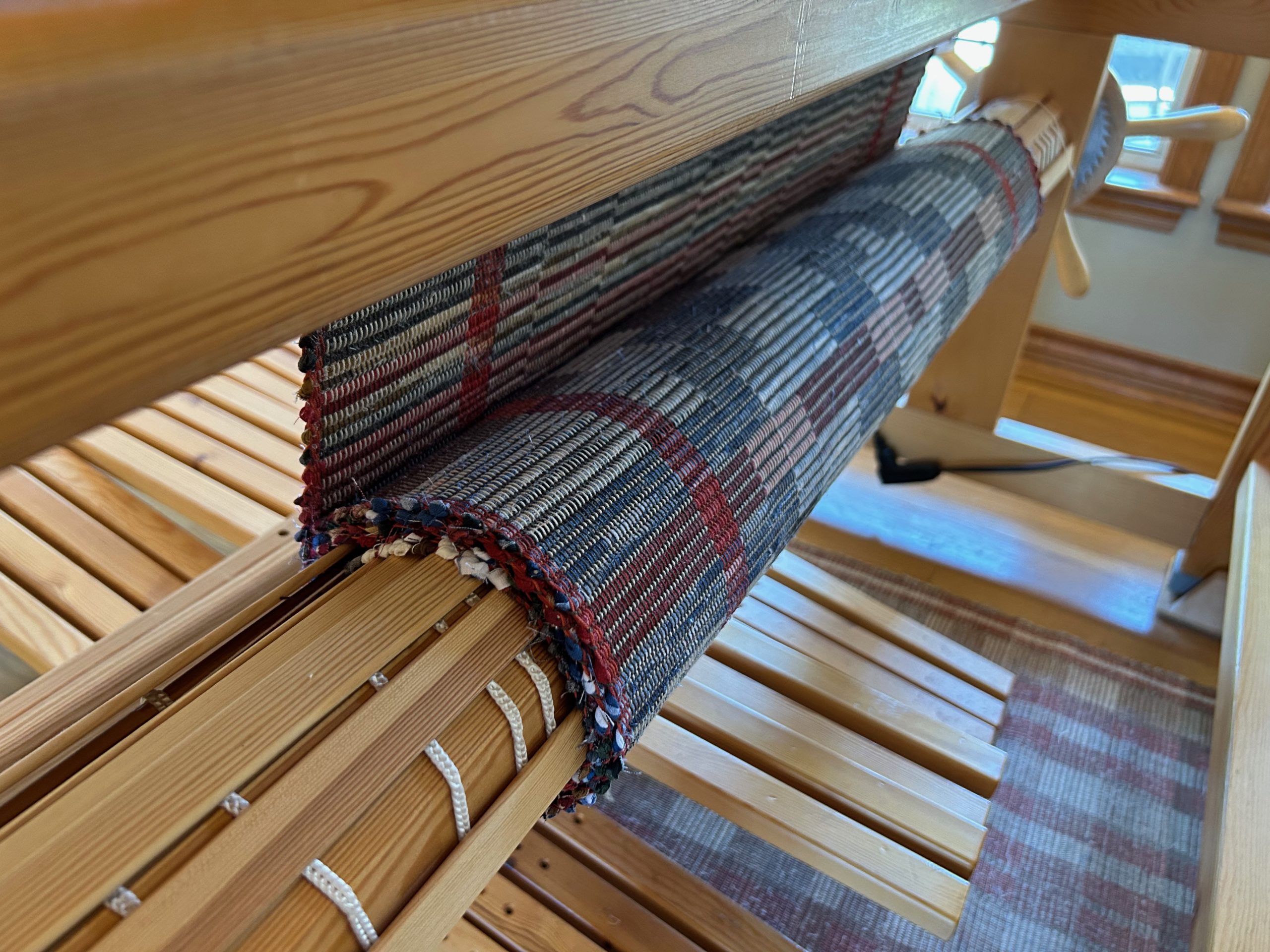
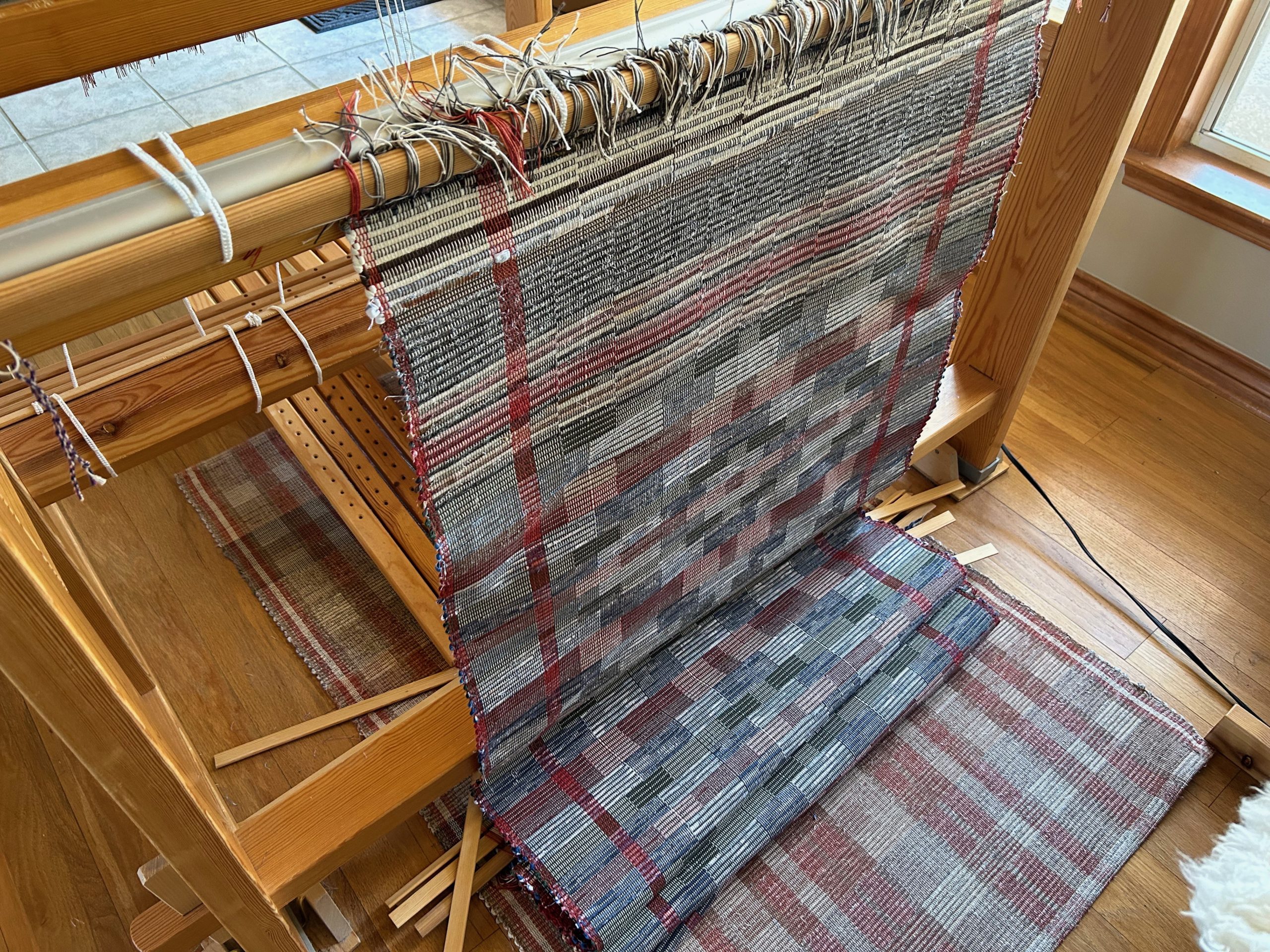
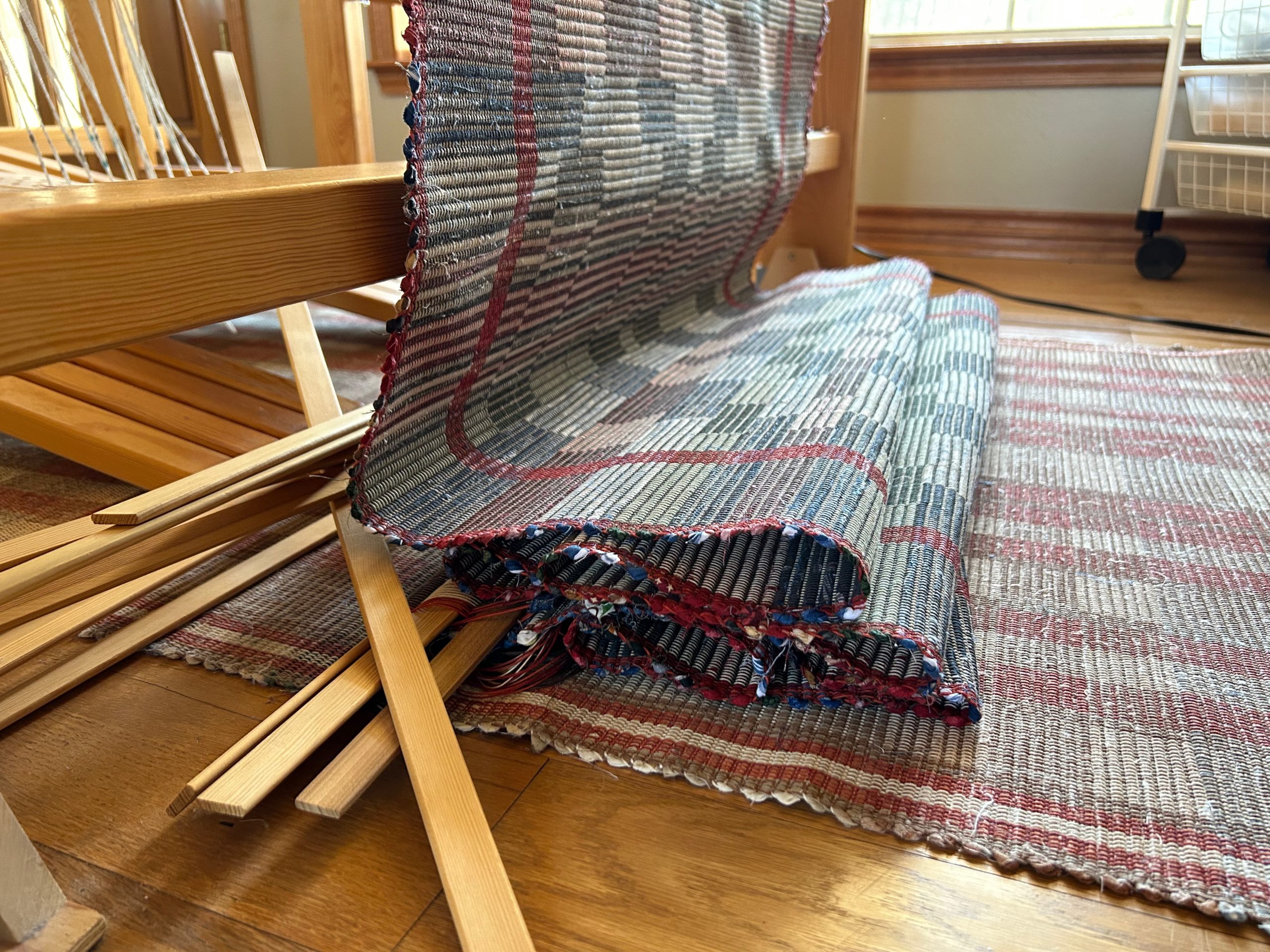
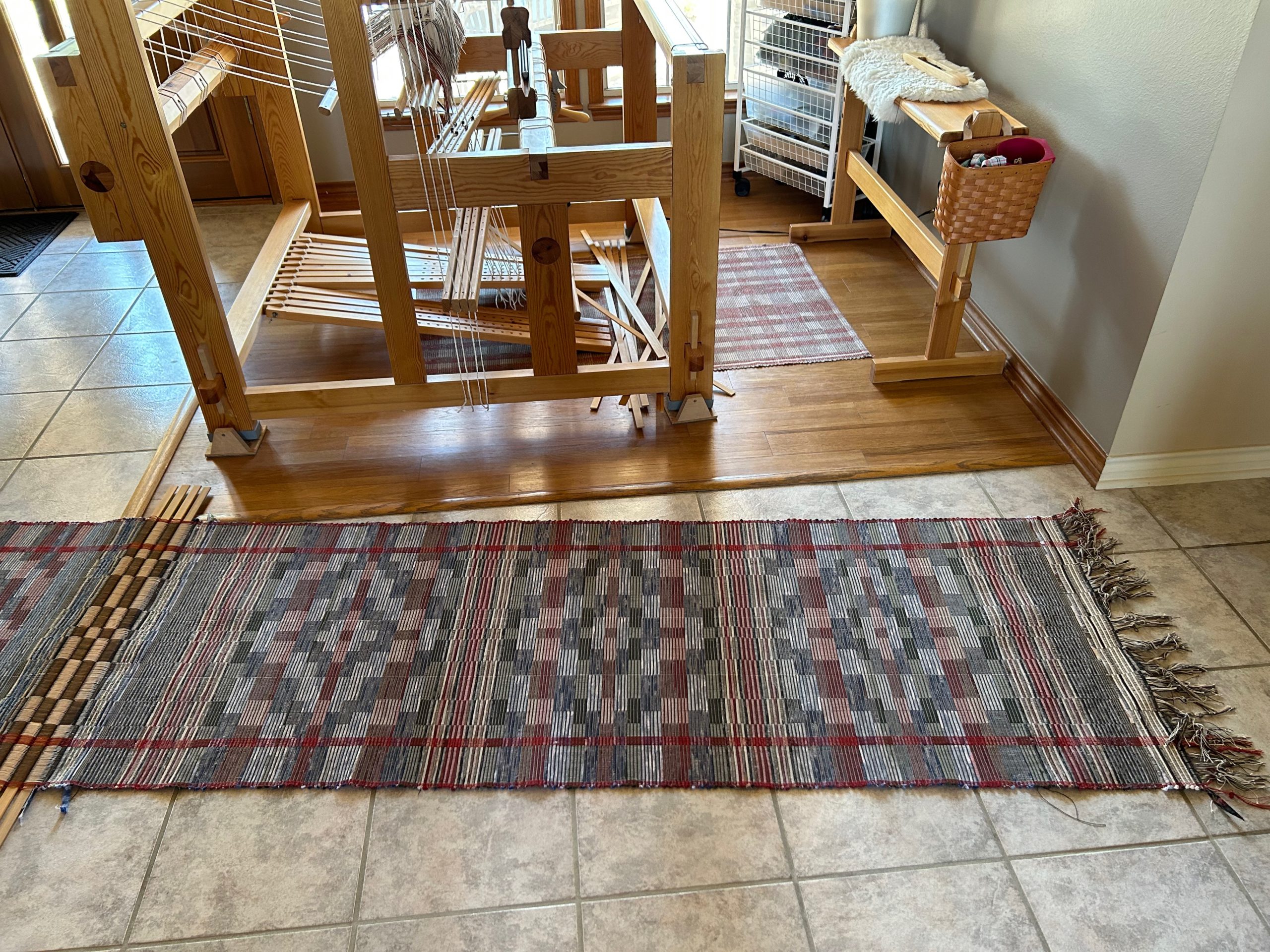
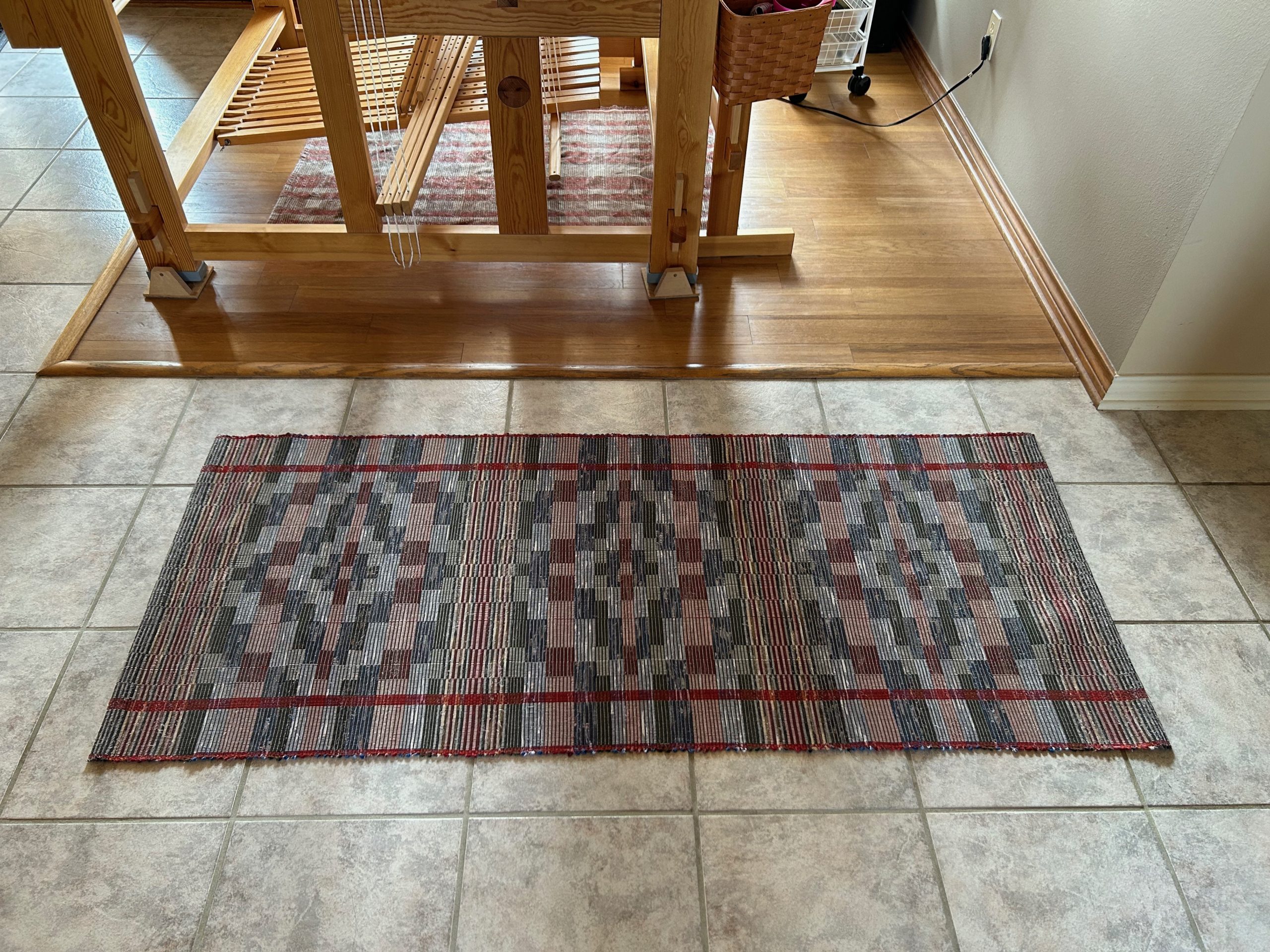
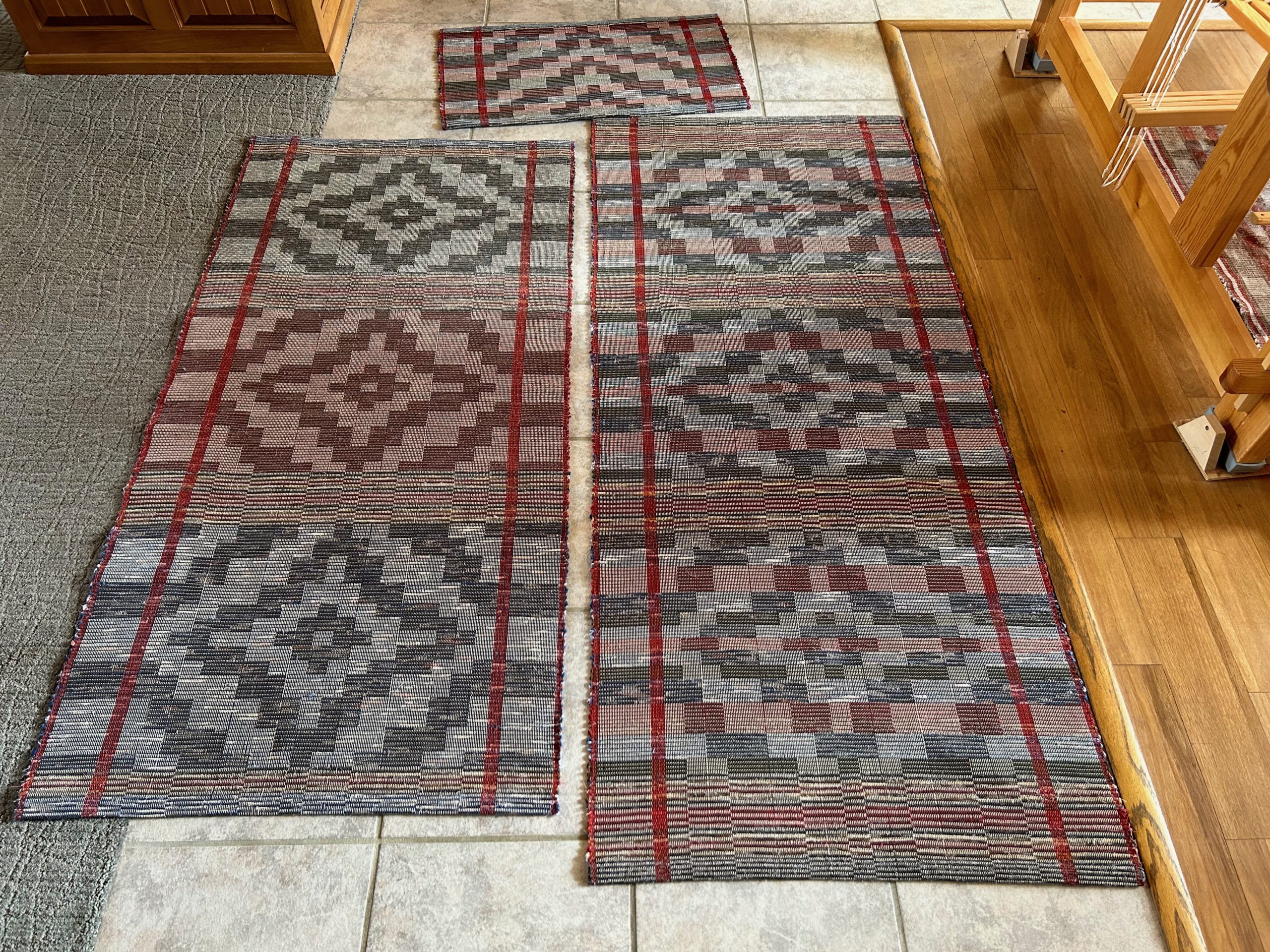
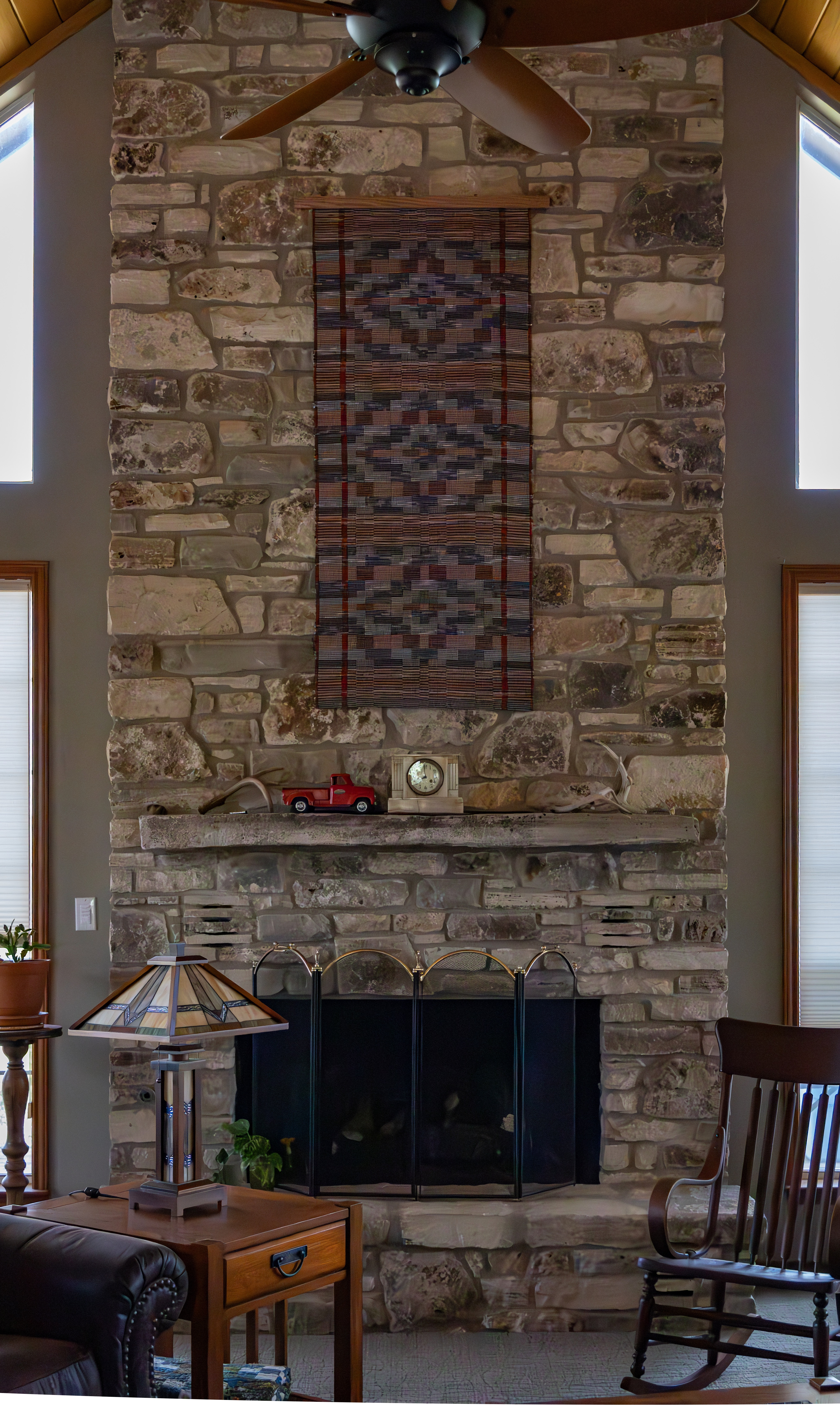
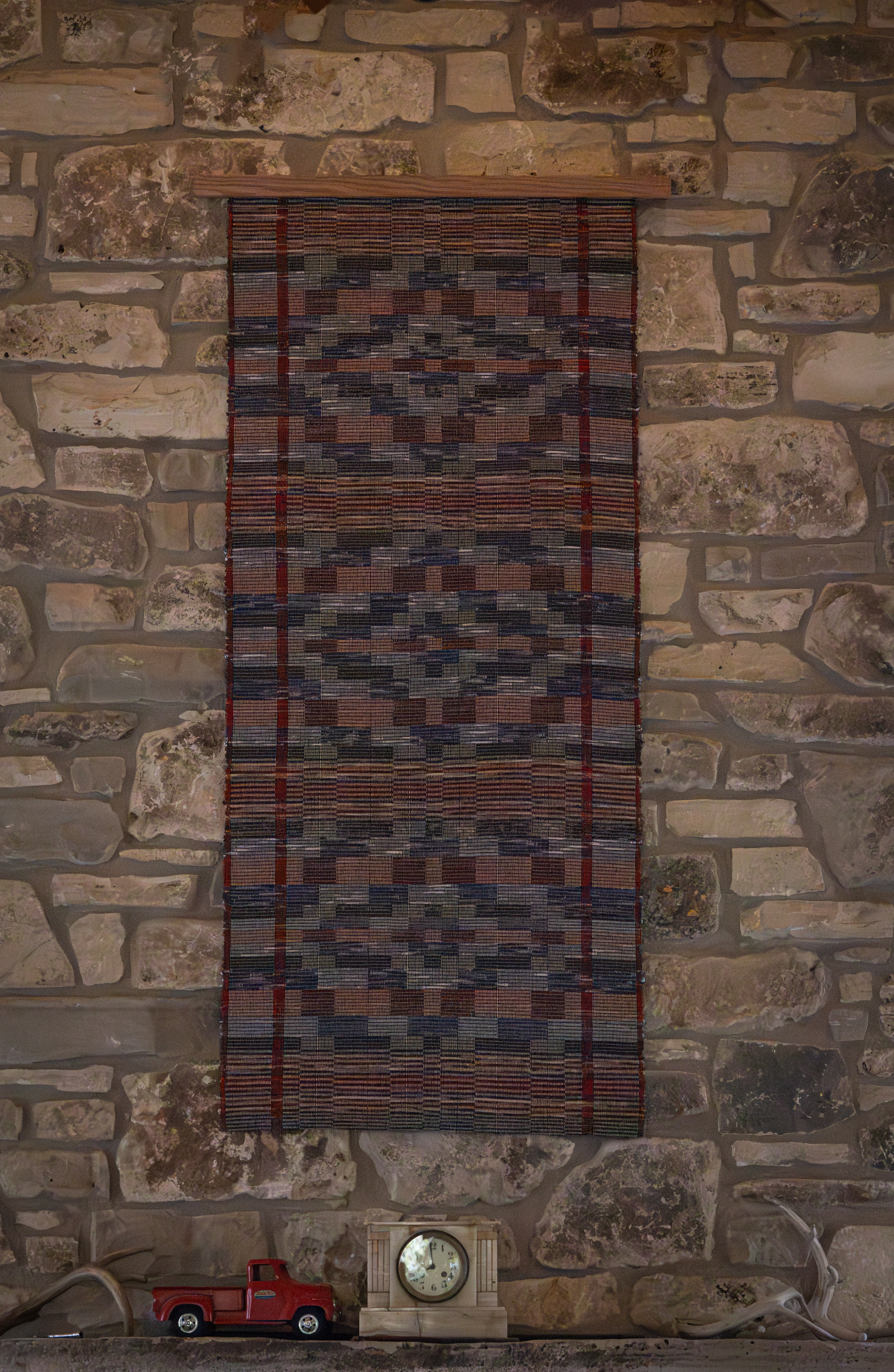
Be different in a good way. Be set apart from things that entertain the world. Find your pleasure in things that please the Lord—like creativity, beauty, and love poured into your home.
May you express yourself in positive ways.
God bless your home,
Karen
My husband and I coined the word “lapkin” when our children were young. Lap + napkin = lapkin. We wanted our children to learn the courtesy of placing a napkin on their lap when they were seated for a meal. “Lapkin check!” was a fun game we made of it. The armadillo on the drawloom is a lapkin, if I ever saw one. This thirsty cloth will soak up any drips and spills, smeary hands, or messy mouths that come in contact with it.
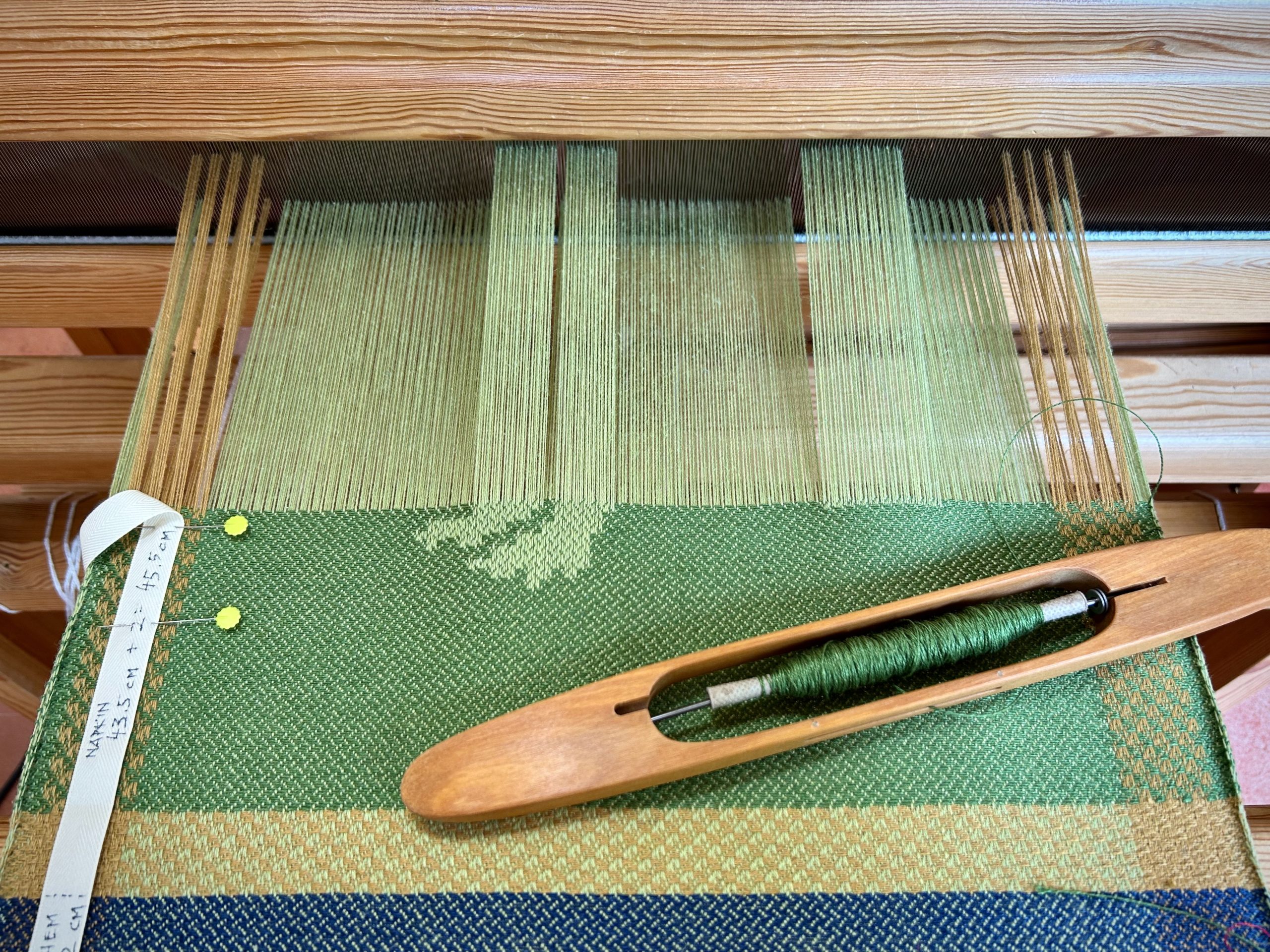
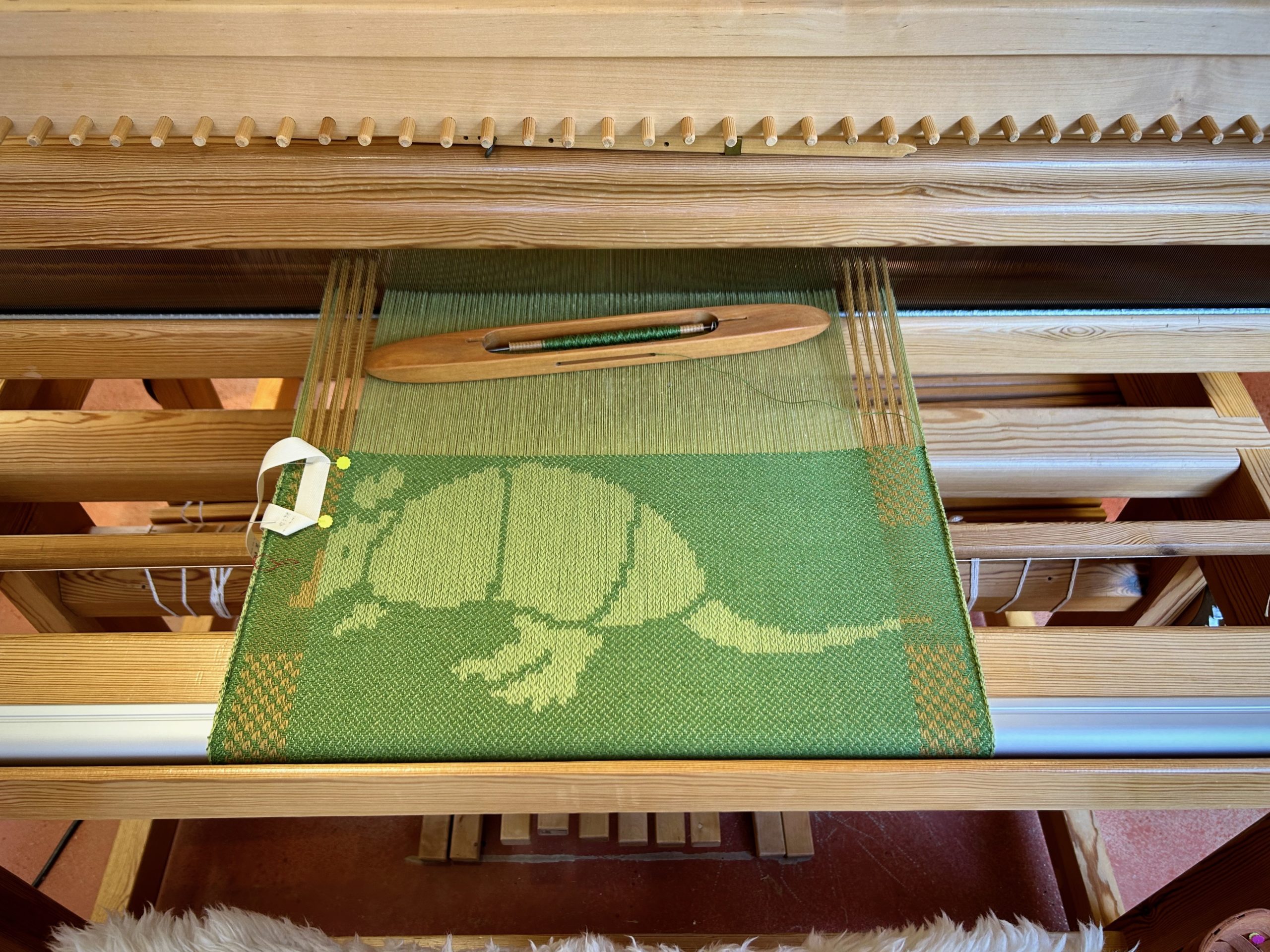
Armadillo is the first of a dozen critters that will parade across this loom. Armadillo napkin is the only one of its kind. I’m certain of that. (Fox is up next.)
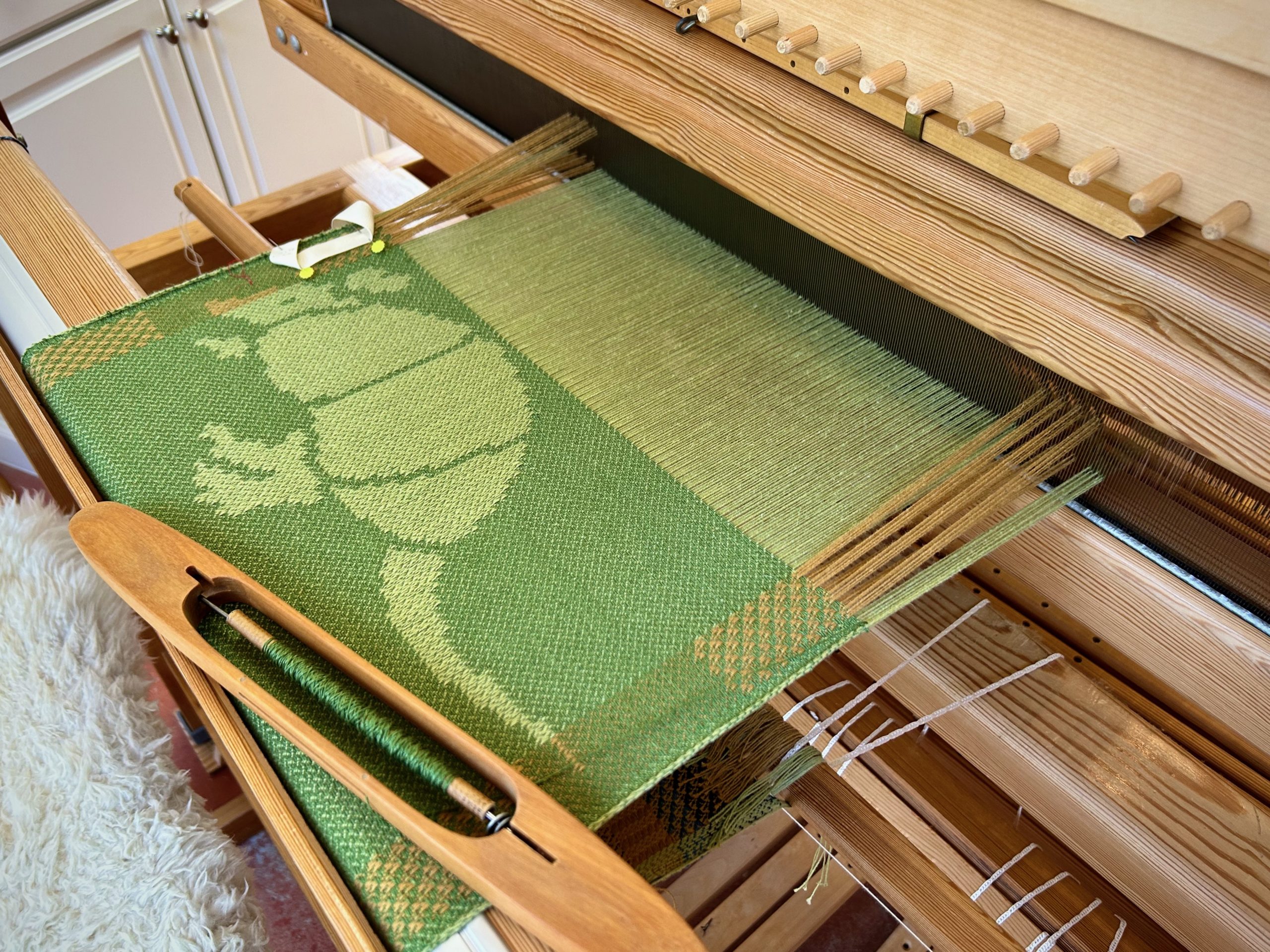
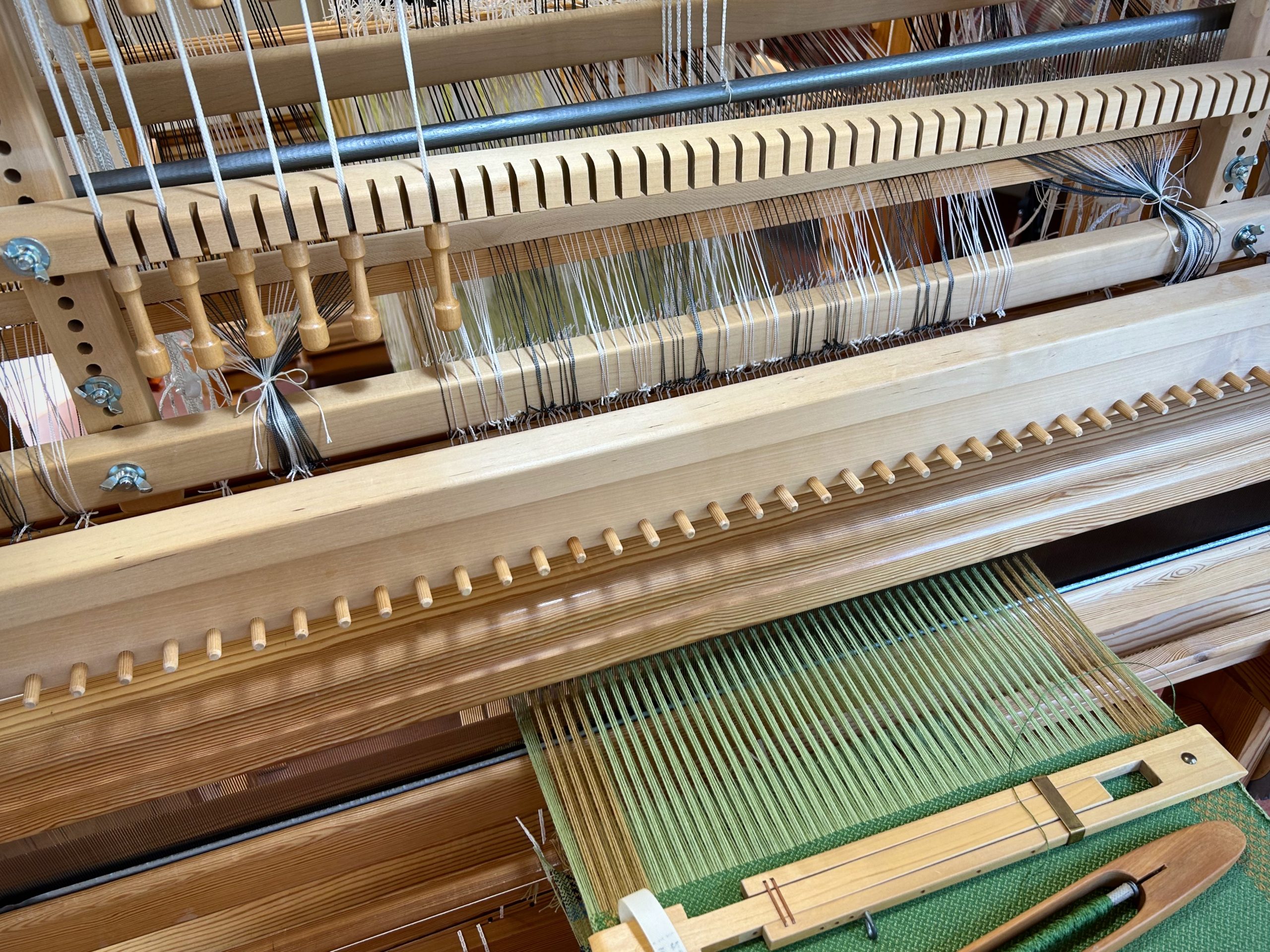
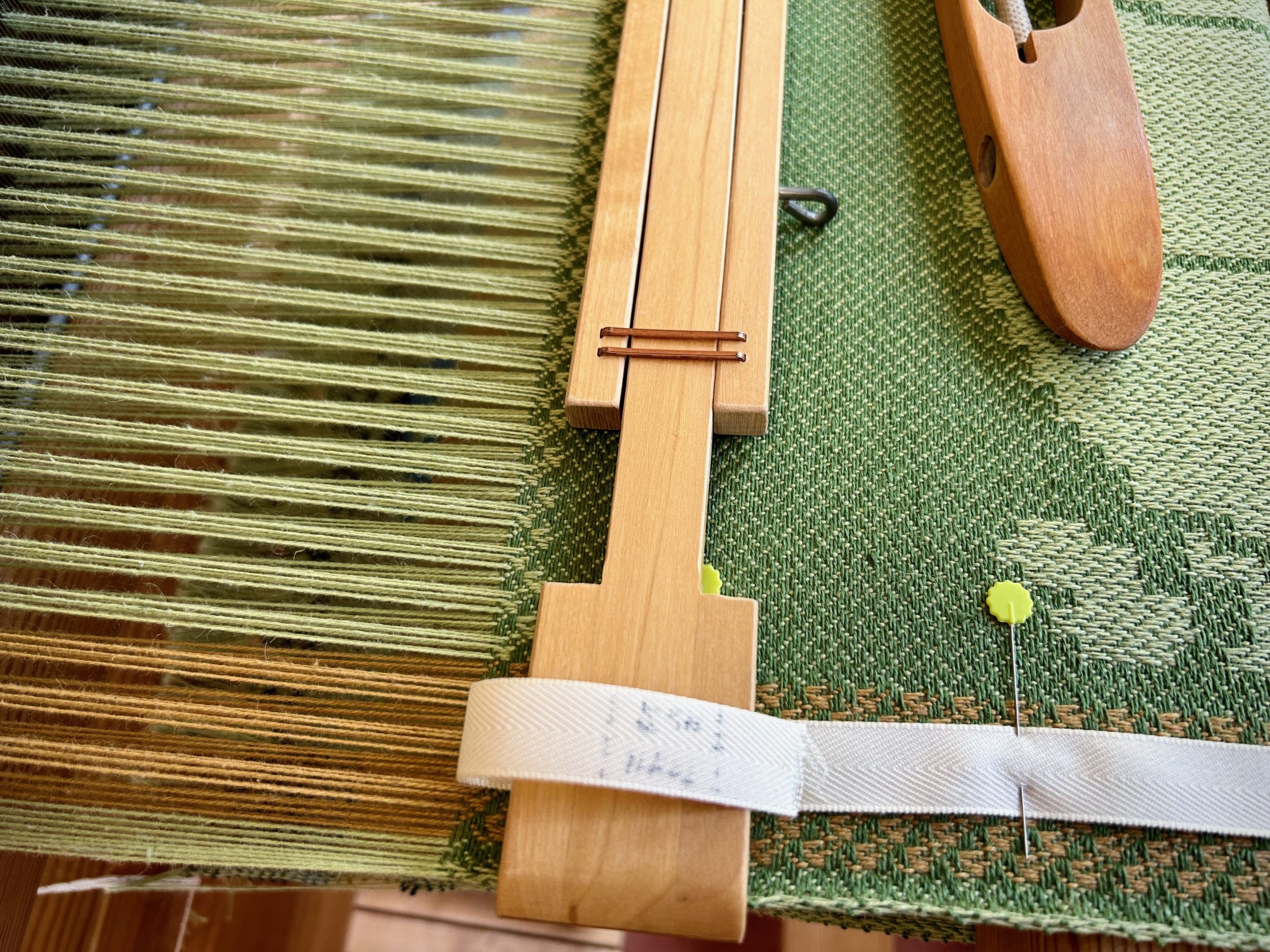
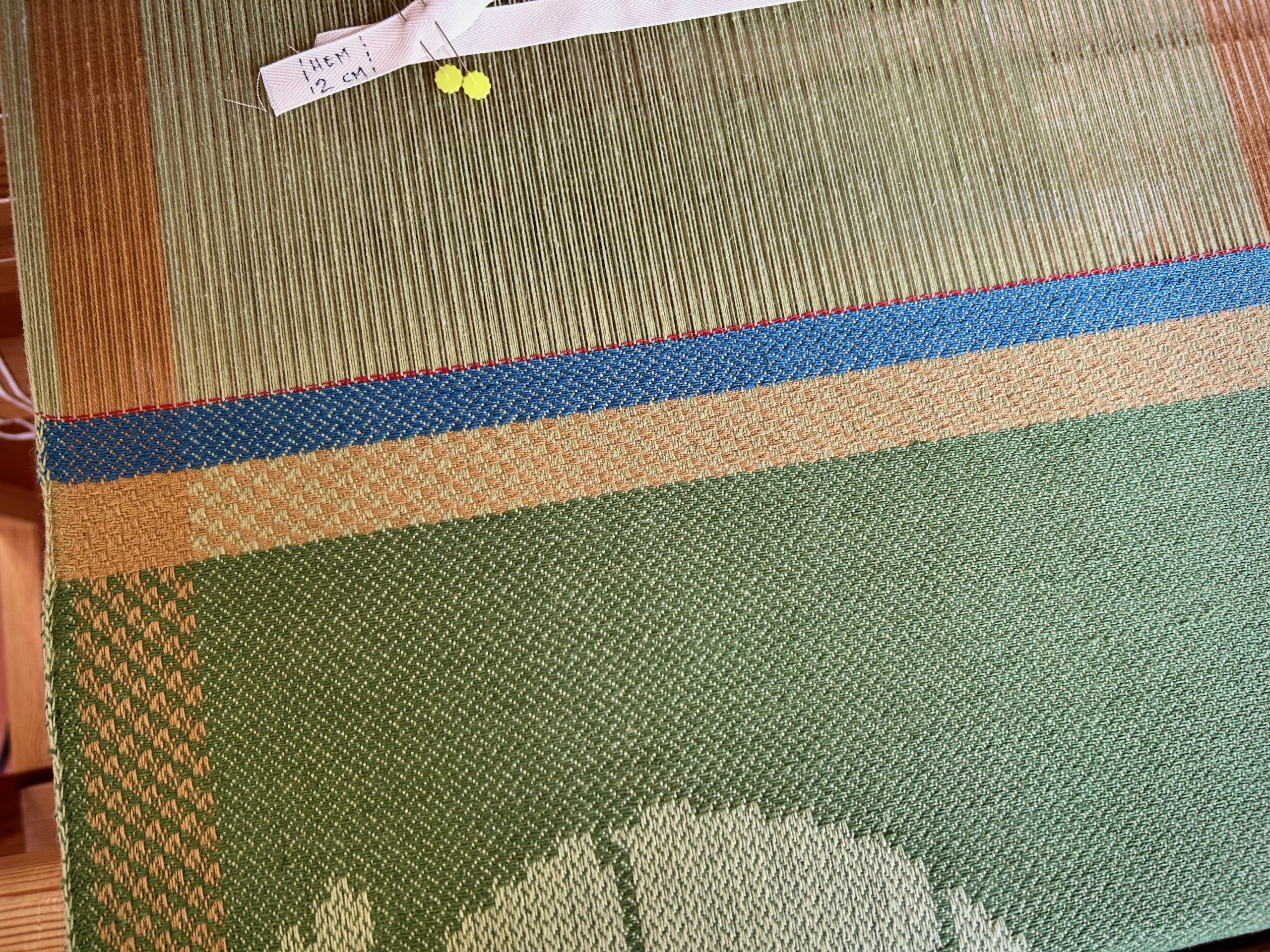
Lapkins give us a discreet way to stay tidy at the table. Armadillo, however, doesn’t intend to stay discreet. I’m pretty certain of that, too.
May your courtesy lessons be fun.
Happy weaving.
Karen
I decided to make another visit this week to the Kerr Arts and Cultural Center gallery in Kerrville, Texas that is exhibiting some of my fiber fine art. And I am greeted by a pleasant surprise:
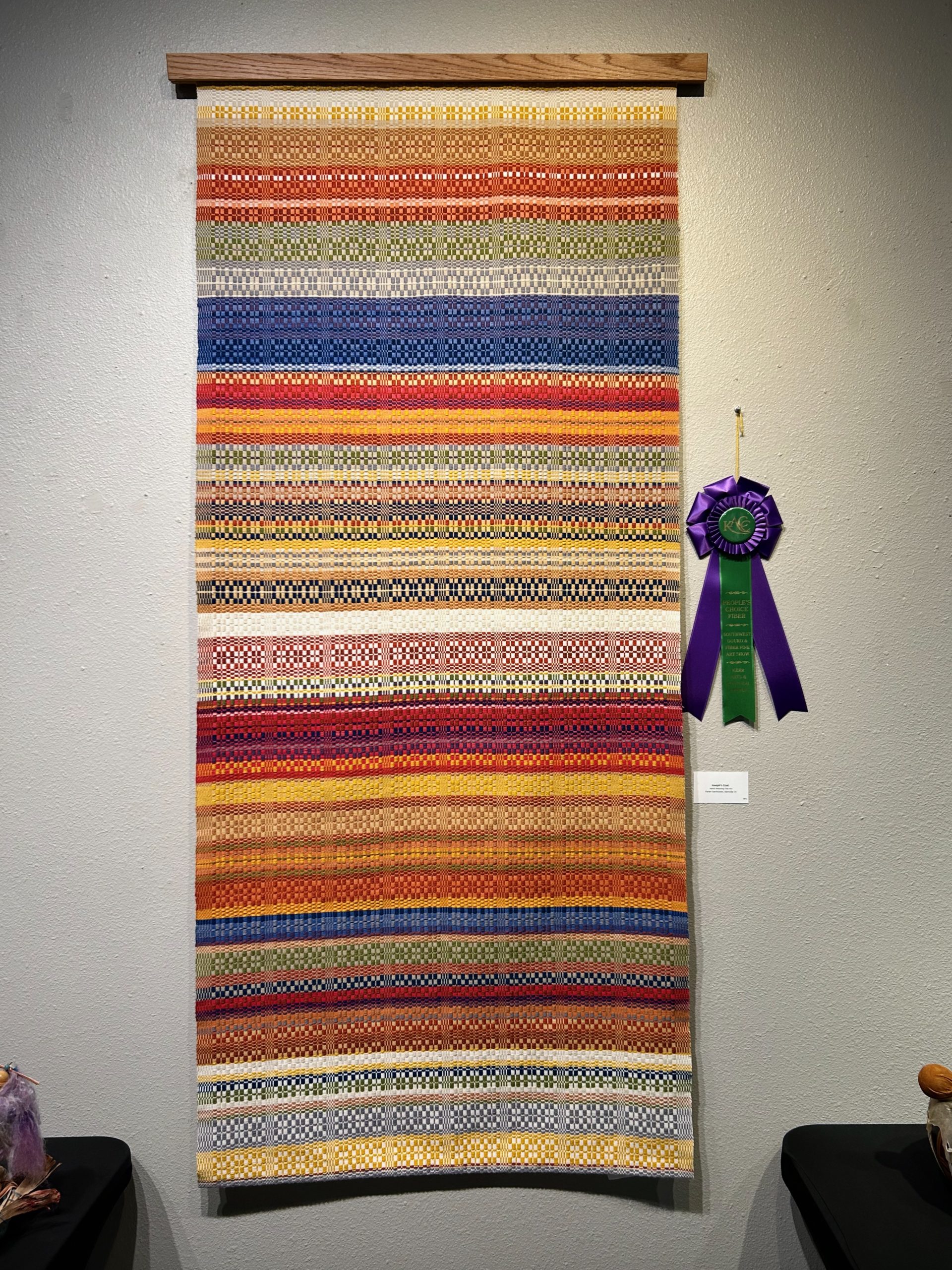
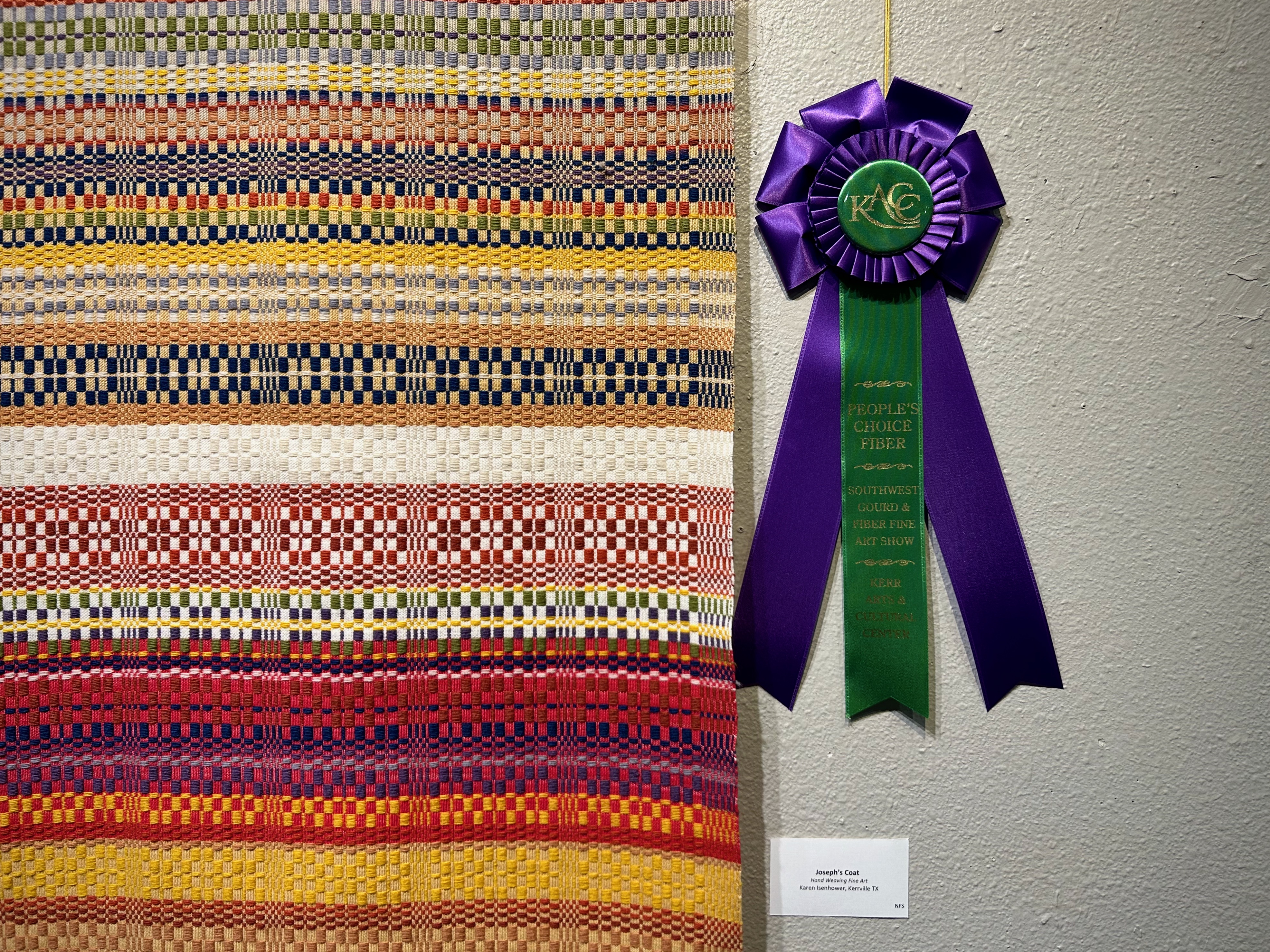
When you want people to enjoy seeing what you enjoy making, there’s nothing better than being awarded “People’s Choice!”
Humbly grateful,
Karen